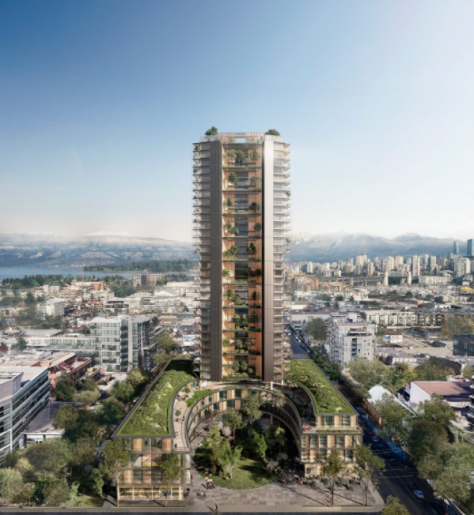 Laurence Grigorov, as director of a residential property development company, keeps abreast of international architectural designs for residential development projects that the company is involved in locally. Laurence Grigorov has been developing luxury residential projects in Johannesburg, South Africa for nearly 15 years and is highly influenced by modern design trends.
Laurence Grigorov, as director of a residential property development company, keeps abreast of international architectural designs for residential development projects that the company is involved in locally. Laurence Grigorov has been developing luxury residential projects in Johannesburg, South Africa for nearly 15 years and is highly influenced by modern design trends.
Balconies fan out like leaves from the mixed-use L’Arbre Blanc tower, which Sou Fujimoto has completed in Montpellier with Nicolas Laisné, Dimitri Roussel and OXO Architects.
Modelled on the shape of a tree, the curved 17-storey building contains 113 apartments with cantilevering balconies, alongside publicly accessible facilities on the ground floor and rooftop. This layout was designed by Fujimoto, Laisné, Roussel and OXO Architectes to “reinvent the tower block”.
According to the studios the shape facilitates interaction and encourages residents to embrace the outdoors – nodding to Montpellier’s tradition of outdoor living.
L’Arbre Blanc, which translates as White Tree, was the winning design of Montpellier city council’s Folie Richter competition in 2013 that asked for a “modern folly” to “enrich the city’s architectural heritage”.
Fujimoto, Laisné, Roussel and OXO Architectes chose to collaborate on the design in recognition of their shared belief that architecture should evoke natural forms.
The 113 apartments in the L’Arbre Blanc tower each face a different direction, and all have their own balconies. Some of the balconies cantilever to over seven metres, and the duplex flats feature two that are connected by stairs. Intended for use as external living space, these encourage residents on different floors to interact.
On the ground floor of L’Arbre Blanc, there is a public art gallery lined with glass walls that opens out to a newly extended park along the Lez River. Meanwhile, at the top of the tower a rooftop bar with a panoramic garden allows the public to enjoy views of the city, alongside a more private common area for residents.
Fujimoto is a Japanese architect and founder of Sou Fujimoto Architects, established in 2000. He describes L’Arbre Blanc as a “springboard for [his] work in France”.
Words & image courtesy of www.dezeen.com
 Laurence Grigorov,
Laurence Grigorov, 